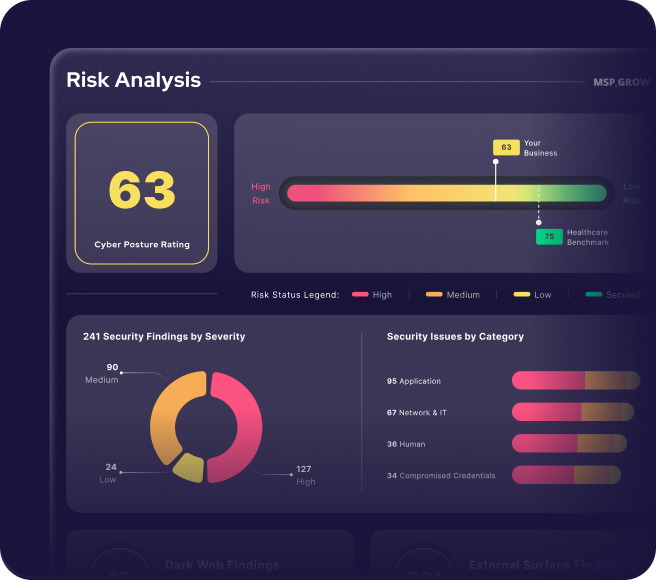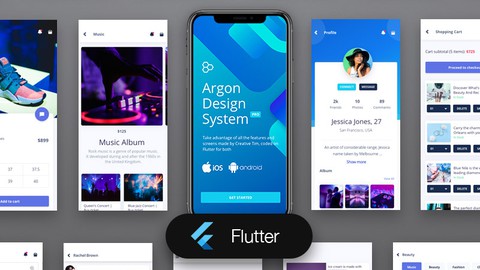Introduction
In the modern landscape of Web Development Tools, React has established itself as a dominant library for building user interfaces. However, with the power of the Virtual DOM, hooks, and complex state management comes a unique set of challenges. React Debugging is not merely about fixing syntax errors; it is an investigative process involving the analysis of component lifecycles, asynchronous data flows, and performance bottlenecks. As applications scale, the ability to efficiently diagnose and resolve issues becomes a critical skill for any developer, whether they are focused on Frontend Debugging or full-stack implementation.
Debugging a React application requires a shift in mental models compared to traditional vanilla JavaScript Debugging. You aren’t just looking at DOM nodes; you are analyzing a tree of components, props, state, and context. Issues can manifest as infinite render loops, stale closures in hooks, or silent failures in API Debugging. Furthermore, the integration of React with backend technologies—whether it is Node.js Development, Python Development (like Django or Flask), or serverless architectures—adds layers of complexity to the debugging process.
This comprehensive guide will explore the depths of debugging React applications. We will move beyond simple console logging to explore advanced Chrome DevTools features, specialized Debug Tools, strategies for Network Debugging, and architectural patterns that prevent bugs before they happen. By mastering these techniques, you can streamline your Bug Fixing workflow and ensure your applications are robust, performant, and production-ready.
Section 1: Core Concepts and The Debugging Mindset
Before diving into external tools, it is essential to understand the core mechanisms of debugging within the React ecosystem. Effective debugging starts with understanding Stack Traces and Error Messages. React provides descriptive error overlays in development mode, but interpreting them correctly is key. A common pitfall for developers transitioning from other frameworks is misunderstanding the asynchronous nature of state updates.
Leveraging the Console Effectively
While console.log is the most used tool in JavaScript Development, the console object offers significantly more power for Code Debugging. When dealing with complex objects or arrays of data, standard logging can clutter the output, making it difficult to spot trends or specific values.
Using console.table provides a structured view of data, while console.group allows you to organize logs hierarchically, which is particularly useful when tracing component lifecycle methods or Redux actions.
// Advanced Console Debugging Pattern
const debugUserData = (users) => {
console.group('User Data Analysis');
// Check if users exist
if (!users || users.length === 0) {
console.warn('No users found in the payload');
console.groupEnd();
return;
}
// Table view for cleaner inspection of object properties
console.table(users, ['id', 'name', 'email', 'role']);
// Conditional logging for specific error states
users.forEach(user => {
if (!user.email) {
console.error(`Data Integrity Error: User ${user.id} is missing an email.`);
}
});
console.groupEnd();
};
// Simulating a fetch call
const mockUsers = [
{ id: 1, name: 'Alice', email: 'alice@example.com', role: 'Admin' },
{ id: 2, name: 'Bob', email: '', role: 'User' }, // Missing email
{ id: 3, name: 'Charlie', email: 'charlie@example.com', role: 'User' }
];
debugUserData(mockUsers);The Power of the Debugger Statement
One of the most underutilized features in Web Debugging is the debugger statement. Placing this keyword in your code pauses execution at that exact line when the browser’s developer tools are open. This allows you to inspect the current scope, call stack, and variable values in real-time without cluttering your code with print statements.
This is particularly vital for Async Debugging. When a promise fails or a useEffect hook behaves unexpectedly, pausing execution allows you to step through the code line-by-line to see exactly where the logic diverges from your expectations.

Section 2: Implementation Details and React DevTools
The official React Developer Tools extension is indispensable for Application Debugging. It provides two primary tabs: “Components” and “Profiler.” The Components tab allows you to inspect the component hierarchy, view current props and state, and even manipulate them to test different scenarios. This is crucial for identifying “prop drilling” issues or understanding why a component is receiving the wrong data.
Debugging Hooks and Stale Closures
With the advent of React Hooks, a new class of bugs emerged, primarily revolving around the dependency array in useEffect and stale closures. A stale closure occurs when a function captures variables from a previous render that are no longer up to date. This is a frequent source of frustration in React Debugging.
Below is an example of a common bug involving a stale closure and how to fix it using the functional update pattern or useRef. This scenario often happens in Timer or Subscription logic.
import React, { useState, useEffect, useRef } from 'react';
const CounterBug = () => {
const [count, setCount] = useState(0);
// THE BUG:
// This effect runs once on mount. The closure captures 'count' as 0.
// Every second, it sets count to 0 + 1, so the counter never goes past 1.
/*
useEffect(() => {
const id = setInterval(() => {
console.log(`Current count is: ${count}`); // Always logs 0
setCount(count + 1);
}, 1000);
return () => clearInterval(id);
}, []); // Empty dependency array causes the stale closure
*/
// THE FIX:
// Using the functional update form of setState allows us to access
// the most current state value without adding 'count' to the dependency array
// (which would cause the interval to reset on every render).
useEffect(() => {
const id = setInterval(() => {
setCount(prevCount => {
console.log(`Updating from ${prevCount} to ${prevCount + 1}`);
return prevCount + 1;
});
}, 1000);
// Cleanup function to prevent memory leaks
return () => clearInterval(id);
}, []);
return (
<div>
<h3>Count: {count}</h3>
</div>
);
};
export default CounterBug;Performance Profiling
Debug Performance is just as important as debugging logic. The React Profiler records how long each component takes to render and why it rendered. If you notice your application feels sluggish, use the Profiler to identify components that are re-rendering unnecessarily. Common culprits include passing new object references or anonymous functions as props, which breaks referential equality checks in React.memo.
Section 3: Advanced Techniques: Network and Custom Hooks
Modern React applications are heavily dependent on data fetching. Network Debugging is the process of inspecting traffic between the client and the server. Whether you are consuming a REST API or a GraphQL endpoint, understanding the request and response cycle is critical. When an application behaves unexpectedly, the issue often lies not in the UI logic, but in the data payload or the HTTP status code.
Intercepting and Logging Network Requests
While the “Network” tab in Chrome DevTools is powerful, sometimes you need to debug network flows programmatically or log them to an external Error Monitoring service. If you are using axios or the standard fetch API, you can implement interceptors or wrappers to gain visibility into API Development issues.
Furthermore, in complex applications involving Microservices Debugging, tracking a request ID across the frontend and backend is essential. Here is how you might implement a debug wrapper for fetch to log detailed network activity, which is useful for both Mobile Debugging (in React Native) and web environments.

// Network Debugging Utility
const originalFetch = window.fetch;
window.fetch = async (...args) => {
const [resource, config] = args;
// Log the Request
console.groupCollapsed(`Network Request: ${resource}`);
console.log('Method:', config?.method || 'GET');
console.log('Headers:', config?.headers);
if (config?.body) {
console.log('Body:', JSON.parse(config.body));
}
console.groupEnd();
try {
const response = await originalFetch(...args);
// Clone response to read body without consuming the stream for the app
const clone = response.clone();
const responseBody = await clone.json().catch(() => 'Text or Blob content');
// Log the Response
console.groupCollapsed(`Network Response: ${resource}`);
console.log('Status:', response.status);
console.log('Payload:', responseBody);
console.groupEnd();
return response;
} catch (error) {
console.error(`Network Error on ${resource}:`, error);
throw error;
}
};
// Usage example
// fetch('https://api.example.com/data');Debugging Re-renders with Custom Hooks
One of the most difficult aspects of React Debugging is determining exactly which prop change caused a component to re-render. This falls under the umbrella of Performance Monitoring. While the React DevTools Profiler helps, a custom hook can provide granular insight during development. This technique effectively performs Dynamic Analysis on your component’s props.
import { useEffect, useRef } from 'react';
// Custom Hook: useTraceUpdate
// Usage: useTraceUpdate(props); inside any component
function useTraceUpdate(props) {
const prev = useRef(props);
useEffect(() => {
const changedProps = Object.entries(props).reduce((ps, [k, v]) => {
if (prev.current[k] !== v) {
ps[k] = [prev.current[k], v];
}
return ps;
}, {});
if (Object.keys(changedProps).length > 0) {
console.group('Props Changed');
console.log('Changed props:', changedProps);
console.groupEnd();
}
prev.current = props;
});
}
export default useTraceUpdate;Section 4: Best Practices and Optimization
Effective debugging is not just about fixing bugs; it is about creating an environment where bugs are harder to create and easier to find. This involves integrating Static Analysis, robust Error Tracking, and automated testing into your workflow.
Error Boundaries for Production Debugging
In Production Debugging, you cannot rely on the console. When a JavaScript error occurs in a part of the UI, it shouldn’t crash the whole application. React Error Boundaries catch errors anywhere in their child component tree, log those errors, and display a fallback UI. This is a critical pattern for System Debugging and maintaining user experience.
Integrating Error Boundaries with a service like Sentry or LogRocket allows you to capture the Stack Traces and user session data remotely, turning a vague user report into actionable data.

import React from 'react';
class ErrorBoundary extends React.Component {
constructor(props) {
super(props);
this.state = { hasError: false };
}
static getDerivedStateFromError(error) {
// Update state so the next render will show the fallback UI.
return { hasError: true };
}
componentDidCatch(error, errorInfo) {
// Log the error to an error reporting service
console.error("Uncaught error:", error, errorInfo);
// Example: logErrorToService(error, errorInfo);
}
render() {
if (this.state.hasError) {
return (
<div className="error-fallback">
<h2>Something went wrong.</h2>
<p>Please refresh the page or contact support.</p>
</div>
);
}
return this.props.children;
}
}
export default ErrorBoundary;Linting and TypeScript
Preventative debugging is the most efficient form of debugging. Tools like ESLint (specifically `eslint-plugin-react-hooks`) perform Static Analysis to catch issues like missing dependencies in `useEffect` before you even run the code. Furthermore, adopting TypeScript Debugging workflows drastically reduces runtime errors by enforcing type safety. If you are passing a string where a number is expected, TypeScript will flag this during development, saving hours of Bug Fixing later.
Testing as a Debugging Tool
Unit Test Debugging and Integration Debugging using tools like Jest and React Testing Library ensure that your logic holds up under various conditions. Writing a failing test case that reproduces a bug is often the best way to fix it and ensure it never returns (regression testing). This is a cornerstone of CI/CD Debugging and modern DevOps practices.
Conclusion
Mastering React Debugging is a journey that transforms you from a coder into a software engineer. It requires a deep understanding of the framework’s internals, proficiency with Developer Tools, and a disciplined approach to Error Monitoring. By utilizing the console effectively, leveraging the React DevTools Profiler, intercepting network requests, and implementing Error Boundaries, you gain full visibility into your application’s behavior.
Whether you are tackling Memory Debugging issues, optimizing Node.js Errors in your backend integration, or refining the user experience in a complex SPA, the techniques outlined in this article provide a robust foundation. Remember, every error message is a clue, and every bug is an opportunity to understand your code better. As you continue your JavaScript Development journey, prioritize observability and proactive testing to build resilient, high-quality software.








